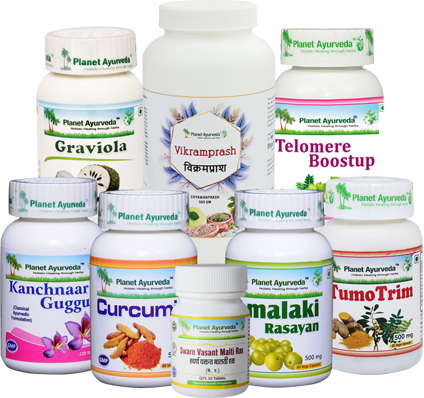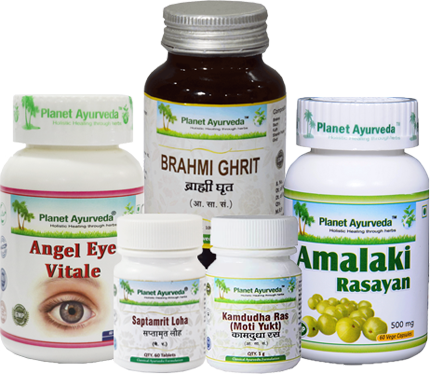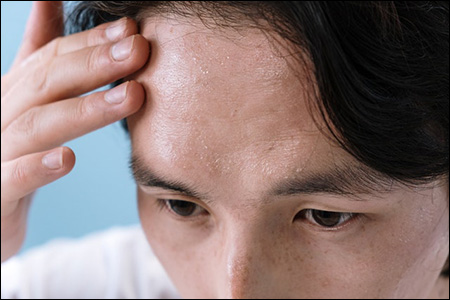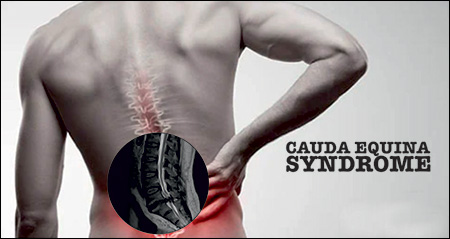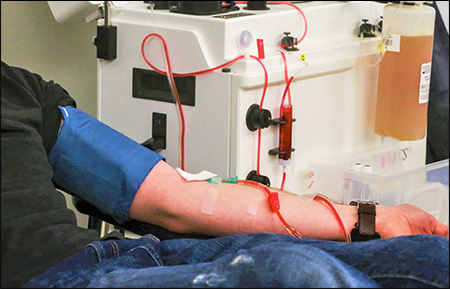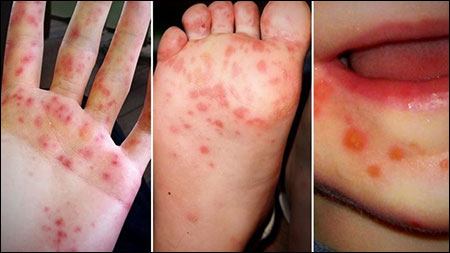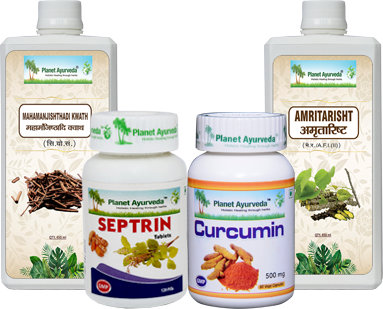Abstract
Cancer is a generic term that is used for various diseases that develop in any part of the body. Hearing about the diagnosis of cancer is very stressful and terrifying for everyone. Because we know what can be the result of this disease, how well can our medicines control the growth of this disease. We know this disease is difficult to treat and some other terms are also used to define cancers like malignant tumours, and neoplastic growths. In this disease, abnormal cells grow beyond their usual boundaries and can invade near structures that are healthy, it is called metastasis. This is the main cause of death in the recent few years. In this article, we are going to discuss cancer, its causes, symptoms, and ayurvedic management of this disease.

Introduction
Cancer causes abnormal growth of cells to divide uncontrollably and spreads all over the body. It can start from anywhere and can be spread up to million-billions of cells. The normal mechanism of the body is for human cells to grow and multiply in the body and after some time or according to the life span of the cell they become old and die after some time interval. They die and new cells take their place; this is a natural mechanism that happens in everyone's body. Cells growth may be called cancerous or non-cancerous, non-cancerous is benign in nature, it doesn't spread just like a lump of tissue.
What Causes Cancer?
Cancer starts from the division of normal cells into cancerous cells in different stages. Cancer is caused due to mutation in the cells. This is all due to the changes in the person's genetic factors and various external factors.
The incidence of cancer starts according to age, and builds up the risks for specific cancers that leads to higher chances of having cancer with age. Some specific genetic changes lead to developing the proto-oncogenes, tumour suppressor genes, and the repairing of DNA genes, which are called 'drivers' of cancer.
Gene mutations do -
- Rapid cell growth leads to creating a lump of the same mutated cells.
- Fails to stop the uncontrolled growth and collide with healthy cells and engulfs them to change into cancerous cells.
Symptoms
Symptoms vary according to the affected site, but here we are discussing some general signs and symptoms -
- Fatigue
- Weakness
- Changes in weight
- Changes in skin colour
- Feeling of lump
- Redness over the affected site, or formation of sores etc.
- Trouble breathing sometimes
- Unexplained fatigue and weakness
- Constant joint pains or muscle spasms
- Bleeding or bruising
Risk Factors
- Age - This is common after mid-age, else there are more chances to develop this disease in the older stage but it can occur at any age.
- A sedentary lifestyle can be a major risk factor for the development of cancer. Persistent alcohol intake, increased sun exposure, and direct UV radiation can develop various types of cancers.
- If there is a history of cancer in the family then the chances of getting diagnosed with cancer may increase.
- Environmental issues like the smoke from cigarettes, or exposure to any chemical fumes, may play a major role in developing cancer.
Facts About Cancer
- Cancer is a leading cause of death all over the world. Around 1 in 6 people died due to cancer last year. Last year approx 10 million people died due to this condition.
- These incidents are increased due to increased alcohol intake, tobacco consumption, low fibrous diet, and less physical activities.
- Most commonly occurring cancers are lung, breast, colon, rectum, and prostate.
- Cancers can be treated well if detected in early stages.
Ayurvedic View And Its Management
Ayurveda is a holistic science that deals with herbal medicines. The main goal of Ayurvedic therapy is to find the ultimate cause of an illness and remove this cause from its roots. Ayurveda is a therapy that helps to maintain the balance of doshas, also called energies of the body. Cancer is correlated with karka roga in Ayurveda. This is caused due to the vitiation of tridosha, all the doshas have aggravated and they block the microchannels of the body that alter the mechanism of the whole body. Some Ayurvedic herbs are mentioned by different Acharyas to control this disease like ashwagandha (Withania somnifera), kanchnaar (Bauhinia variegata), haridra (Curcuma longa), guggul (Commiphora mukul) etc. we can prepare multiple formulations by using these herbs and make them more effective in the cancer disease. Miraculous formulations are prepared by Planet Ayurveda to control this disease are mentioned above -
Herbal Remedies by Planet Ayurveda for Cancer
Planet Ayurveda is an ISO-certified herbal company that prepares various products and all are 100% natural and made from natural herbs. These are totally devoid of colours, fillers, dyes, adulterants, and substitutes. Ayurvedic formulations do not cause any harmful effects on the patients because they are made by classical methods and under the supervision of the most experienced MD Ayurveda experts. For cancer, Planet Ayurveda provides a group of medicine that is kept under the category of Crab Care Advanced Pack.
CRAB CARE ADVANCED PACK
- Kanchnaar Guggul
- Graviola Capsules
- Telomere Boostup
- Curcumin Capsules
- Amalaki Rasayan
- Vikramprash
- Swarn Vasant Malti Ras
- Tumotrim Capsules
Products Description
1. KANCHNAAR GUGGUL
This is a classical herbal formulation consisting of various herbs that are mentioned below, all these herbs are giving immuno-modulatory effects and help to reduce the dangerous symptoms of Cancer.
INGREDIENTS USED IN KANCHNAAR GUGGUL
- Kachnar Bark (Bauhinia variegata) - This herb is very effective in cancer because it has cytotoxic effects that inhibit cell division so it's called an antimitotic herb, and also reduces cell proliferation.
- Amalaki (Emblica Officinalis) - This herb helps to balance the tridosha, especially Kapha, and reduces the Medha dhatu, it is very effective in controlling the growth of unwanted and abnormal cells, plus this herb is rejuvenating in nature.
- Haritaki (Terminalia chebula) - It is ruksha (dry), laghu (light), and ushna virya (hot potency) with panchrasa, except lavana, it is tridosha pacifying in nature and may regulate cell division and controls free radicals.
- Bibhitaki (Terminalia bellerica) - This is Madhur (sweet) in nature and is vata-pitta shamak in nature, this is also rejuvenating in nature and slows down the growth of cancerous cells.
- Shunthi (Zingiber Officinalis) - This herb is very useful as it has anti-cancerous, chemopreventive potential, with an anti-tumorous effect on the body.
- Pippali (Piper longum) - This herb has wonderful properties like reducing inflammation, due to its ushna guna it is anti-mutagenic in nature and exhibits cytotoxic effects i.e. it inhibits cell proliferation. It also has wonderful effects on benign tumours.
- Mareech (Piper nigrum) - This herb is rasaynik in nature, promotes the healthy growth of cells by helping in deprivation of cancerous growth and has anti-inflammatory as well as antioxidant properties.
- Varuna Bark (Crateva religiosa) - Its standardised extract is added in this formulation which is very helpful in immunity enhancing properties, this is a diuretic in nature that helps to detoxify the body by excreting out some of the extra fluid from the body.
- Cardamom (Elettaria cardamomum) - It is helpful in beating oxidative stress and helps to improve overall health due to its anti-inflammatory and antioxidant properties.
- Cinnamon (Cinnamomum Verum) - This herb is widely used in various health ailments and has great results in regulating cell division and controlling free radicals.
- Tejapatra (Cinnamomum Tamala) - It is effective in reducing the swelling and has a beneficial effect on the increased Kapha and rakta doshas in the body. It is helpful in maintaining our GI tract health.
- Guggul (Commiphora Mukul) - It helps in controlling the lipid profile and helps in maintaining a good bloodstream which slows down the blood clotting processes.
Dosage: 2 tablets thrice daily with lukewarm water.
2. GRAVIOLA CAPSULES
This is a patent herbal formulation formulated by Planet Ayurveda consisting of a single herb Graviola (Annona muricata), this herb is very useful in killing cancer cells without damaging the healthy cells, and is responsible to stop the cancer cells from growing and spreading. Graviola mainly attacks the adenosine triphosphate in cancer cells and then they die.
Dosage: 1 Capsule twice daily with plain water after meals.
3. TELOMERE BOOSTUP
This is a patent herbal formulation of Planet Ayurveda consisting of five different herbs that are helpful in controlling cancerous growths plus help to add immunity to the body. Those wonderful herbs are -
INGREDIENTS USED IN TELOMERE BOOSTUP
- Ashwagandha (Withania somnifera) - This wonderful herb is used for reducing anxiety, and stress, and is very beneficial in reducing cancer cells, even in Ayurveda ashwagandha is said to be a steroidal herb.
- Grapeseed (Vitis vinifera) - This herb is widely used to restore the energy in the body and also helps in rejuvenating the cells, it has antioxidant properties that work against cancerous cells.
- Amla (Emblics Officinalis) - Amla is helpful in preventing the growth of cancerous cells, because it has Rasayana properties, with anti-neoplastic, radioprotective, and chemoprotective effects.
- Moringa (Moringa oleifera) - It has great anti-inflammatory properties, that help to prevent inflammation in the body, it protects various organs from damage because of its anti-tubercular and fastens the healing process.
- Giloy (Tinospora cordifolia) - It is one of the most effective Rasayanas-Rejuvenatives, helps increase the effectiveness of protective white blood cells and enhances the immune mechanism of the body.
Dosage: 1 Capsule twice daily with plain water after meals.
4. CURCUMIN CAPSULES
This is a patent herbal formulation consisting of a standardised extract of the miraculous Haridra herb (Curcuma longa). Haridra has been used in our homes for decades and has clearly demonstrated an anti-cancerous strength, it especially pacifies the Kapha and vata dosha which may reduce the effect of cancer and various tumours.
Dosage: 2 Capsules twice daily with plain water after meals.
5. AMALAKI RASAYAN
This is a classical herbal formulation consisting of a single herb named Amla (Emblica Officinalis). It promotes normal appetite and improves digestion. It increases red blood cells and directly acts on the bloodstream. This can also cross the blood-brain barrier so it can show its beneficial effects on the central nervous system. This herbal formulation is said to be anti-aging, helps in the longevity of life, with rejuvenating and anti-cancerous properties.
Dosage: 1 Capsule twice daily, with plain water, after meals.
6. VIKRAMPRASH
This is a patent herbal formulation consisting of various wonderful herbs that are very effective in controlling cancerous growths and helps the patient to recover rapidly and also increase longevity. Name of herbs that are used in Vikramprash are -
INGREDIENTS USED IN VIKRAMPRASH
- Bilva (Aegle marmelos) - Bilva has anti-inflammatory properties, it protects our intestines, and liver, against free radicals, and also protects skin cells from damage plus hydrates, and detoxifies the body.
- Agnimantha (Premna mucronata) - It is Ushna (hot potency), strengthens the body, improves digestion, prevents free radicals that damage the healthy tissues and stops the growth of cancerous cells.
- Shyonak (Oroxylum indicum) - Shyonak is good for opening the microchannals of our body and is very effective in balancing the vata-kapha dosha, illuminates the digestive fire, and reduces pain and abnormal growths in the body.
- Kashmarya (Gmelina arborea) - Also named gambhari, is of sweet, astringent, and bitter taste and is very useful in detoxification of the body. It helps to eradicate unwanted growths and boost the immune response of the body.
- Patla (Stereospermum suaveolens) - This herb is very effective in balancing the Kapha and vata dosha, effective in nourishing the whole body and maintaining the digestive tract healthy.
- Shalparni (Desmodium gangeticum) - It is balya (strengthening in nature), rasayan (rejuvenating in properties), brihan (which increases the growth of the body) and helps to pacify all the tridosha.
- Prishnaparni (Uraria picta) - This is ushna (hot potency), laghu (light), pacifies pitta and kapha dosha, enhance digestive fire, and opens all the microchannels and acts on all the the tumours growths.
- Mashparni (Teramnus labialis) - It is categorised under jeevaniya Gana by acharya Charak which means it gives longevity, it is balya (strengthening in nature), and is pushtikarak (nourishes the whole body).
- Mudgaparni (Phaseolus trilobus) - It is helpful in gaining strength, and helps to kill cancerous growths, it is of sheeta veerya (cold potency), and is bal prada (improves weakness).
- Bala (Sida cordifolia) - It has wonderful Rasayana properties that helps to give anti-aging properties, it is bhedana in nature so it kills abnormal cells, and is Vata-pitta hara in nature.
- Pippali (Long pepper) - This herb helps in alleviating the vata and kapha dosha and may enhance pitta dosha and is also rejuvenating in nature, and helps in detoxification of the body.
- Gokshura (Tribulus terrestris) - It is said to be a very good diuretic, it detoxifies the body by excreting the extra fluid out from the body and does not let the free radicals in the body so protects the healthy cells from damage.
- Shringi (Pistacia chinensis) - It is balya which gives strength to the body and enhances the immune response of the body that helps to kill the harmful bacterias or cells within the body.
- Bhumi amala (Phyllanthus niruri) - It is one of the best herbs that rejuvenates the liver cells and kidney cells, and protects these organs from damage from the free radicals.
- Draksha (Vitis vinifera) - It is a herb that works with kapha dosha and used to do the santarpana of the patient, santarpana is used for nourishing nutrients, draksha is good for maintaining the general health of the patient.
- Jivanti (Leptadenia reticulata) - With the name we can say that this herb is good for providing life, it increases the longevity of life, it helps to rejuvenate the body and kills the harmful growth within the body.
- Haritaki (Terminalia chebula) - It is good for maintaining the nourishment status of the body, it helps to maintain the digestive tract healthy and don't let any infection grows within the intestines.
- Guduchi (Tinospora cordifolia) - Shows tremendous results in weak patients, it has antibacterial or antimicrobial properties that help to fight with various infections and is tridosha pacifying in nature.
- Shati (Curcuma zedoaria) - Also known as kachoor, is good for increasing the appetite, reducing the patient's weakness and enhancing immunity so that the patient can fight off various infections.
- Musta (Cyperus rotundus) - This herb is very good in anti-aging properties, it helps to control the absorption power of the GI tract and is filled with Rasayana properties.
- Punarnava (Boerhavia diffusa) - This herb is said to be the best detoxification herb, that helps to excrete out all the toxins from the body and make our body free from general debility and improve weakness from the body.
- Ela (Elettaria cardamomum) - Ela is madhura rasa and sheeta or cool in potency and is very good in Vata-related conditions. It improves weakness and improves oral health and provides good strength to the GI tract.
- Utpal (Nymphaea alba) - It is grahi in nature, that helps to absorb the supplements more effectively and is very good in GI disorders, it also helps by providing nourishment in the body.
- Vidarikand (Pueraria tuberosa) - It is an immune booster and is very beneficial in removing the free radicals from the body, it also helps to regenerate the damaged cells within the body.
- Vrusha (Adhatoda vasica) - This herb is very effective in alleviating the vata and Kapha dosha, and is beneficial in maintaining the general health of every patient, and is also good for respiratory tract disorders.
- Ashwagandha (Withania somnifera) - This is very adaptogenic in nature and is antioxidant, aphrodisiac, rejuvenator or gives various beneficial properties to enhance our body's strength and immune system.
- Shveta musli (Chlorophytum borivilianum) - This herb is very effective in maintaining the body's strength and is rejuvenating in nature and is helpful in eradicating the cancer-associated weakness and low immunity.
- Kali Musli (Curculigo orchioides) - It is good for detoxification of the body, and boost the body's health mechanism by its balya and brihaniya properties.
- Varahi kand (Dioscorea bulbifera) - It is very good in the absorption of healthy nutrients from the food in intestines, it is very good in blood related disorders and maintains the general health of the patient.
- Shatavari (Asparagus racemosus) - It is madhur (sweet), sheetal (cold), snehan (unctuous) in nature, it rejuvenates the body and helps in improving the pain related symptoms and is tridosha hara in nature.
- Mandukaparni (Centella asiatica) - It is deepan, pachan in nature, so is good for digestive health. The main effect of this herb is on the brain, it regulates all our glands and maintains the balance in all the doshas.
- Manjishtha (Rubia cordifolia) - Cleanses the body and detoxifies the overall metabolism of the body and is a great blood purifier, a good appetiser, and maintains a healthy digestive system.
- Petha (Benincasa hispida) - It is very helpful in regulating the hormonal level balance tridoshas, has Rasayana properties, with anti-neoplastic, radioprotective, and chemoprotective effects.
- Sariva (Hemidesmus indicus) - It is rasayana (rejuvenating) and balya (strengthening) in properties that helps in alleviating the cancerous growths of the cells and protect us from free radicals.
- Brahmi (Bacopa monnieri) - It is said to be a medhya rasayan, it helps in rejuvenating the cells, and is helpful in maintaining the hormonal levels in our body. This is vata anulomna in properties so alleviates various painful conditions effectively.
- Amalaki (Embilica officinalis) - This herb helps to balance the tridosha, especially Kapha, and reduces the Medha dhatu, it is very effective in controlling the growth of unwanted and abnormal cells, plus this herb is rejuvenating in nature.
- Til tel (Sesamum indicum) - It is responsible for controlling the dhatu depletion and maintaining the general health of the patient, it nourishes the body so helps to make the body stronger.
- Go ghrita (Cow's ghee) - Cow ghee is known to be a best nourishing agent in the world, so is balya, along with it provides good immunity and is helpful in pacifying all the doshas effectively.
- Vanshlochan (Bambusa arundinacea) - This is adaptogenic in nature, it provides strength to the body and is helpful in killing the unhealthy cells in the body.
- Pipali (Piper nigrum) - This herb has wonderful properties like reducing inflammation, due to its ushna guna it is anti-mutagenic in nature and inhibits cell proliferation. It also has wonderful effects on benign growths.
- Madhu (Honey) - It is brihaniya and balya, and is helpful in detoxifying the body and enhances the immune system against any infection or disease.
- Dalchini (Cinnamomum zeylanica) - It is effective in reducing the swelling and has a beneficial effect on the increased Kapha and rakta doshas in the body. It is helpful in maintaining our GI tract health.
- Tejapatra (Cinnamomum Tamala) - It is effective in reducing the swelling and has a beneficial effect on the increased Kapha and rakta doshas in the body. It is helpful in maintaining our GI tract health.
- Nagkeshar (Mesua ferrea) - It is sangrahi in nature, promotes digestion and is good for agni-deepana, and is helpful in improving the immune system effectively.
- Mishri (Sugar) - It is good for maintaining good digestion and is balya in nature so gives strength to the body. It helps in getting rid of conditions such as acidity, gas, bloating, indigestion etc.
- Jal (water) - Jal is used here for binding all the ingredients together and is good for absorption of herbs in the body.
Dosage: 1 teaspoonful, twice daily with plain water, after meals.
7. SWARN VASANT MALTI RAS
This is a classical herbo- mineral formulation consisting of various herbs and minerals that helps to strengthen the body and is rejuvenating, antispasmodic and anti-inflammatory in nature. It is consisting of wonderful effective minerals like -
INGREDIENTS USED IN SWARN VASANT MALTI RAS
- Swarna Bhasma (Gold Bhasma) - One of the most effective mineral bhasma, with best effects on cardiac protection, and liver protection, shows a direct effect on the brain and nervous system.
- Mukta Bhasma (Pearl Bhasma) - This mineral is cold in potency, is very helpful in blood disorders, improves appetite, and promotes the absorption of essential supplements in the body.
- Darada (Purified Cinnabar) - This mineral is very beneficial in balancing Vata and pitta dosha and is very good for promoting the immune system and is very effective in all organ protection.
- Parada (Purified Mercury) - Parada is very good in rejuvenation, this helps our essential cells to differentiate properly and kills the harmful cells to protect our body.
- Gandhaka (Purified Sulphur) - It is widely famous for its tridosha balancing property, is helpful in managing various inflammatory conditions, and boosts healthy cell growth to promote immunity.
- Maricha (Piper longum) - This herb is rasaynik in nature, promotes the healthy growth of cells by helping in deprivation of cancerous growth and has anti-inflammatory as well as antioxidant properties.
- Kharpara (Rasaka) - It has antioxidant, anti-inflammatory properties that protects the body from free radicals, and is very effective in cleansing and detoxifying the body.
- Trikatu (Pepper, long pepper and dried ginger) - This herb has wonderful properties like reducing inflammation, due to its ushna guna it is anti-mutagenic in nature and exhibits cytotoxic effects i.e. it inhibits cell proliferation.
- Ayas Bhasma (Iron Bhasma) - It is responsible for controlling the dhatu depletion and maintaining the general health of the patient, it nourishes the body and helps to make it stronger.
- Tamra Bhasma (Copper Bhasma) - Stimulates digestion, has great effects on cleaning the blood, and helps in controlling the growth of unwanted cells.
- Kantakari rasa (extract of Solanum xanthocarpum) - It is very effective in detoxification of the body, gives strength and provides good immunity and is helpful in pacifying all the doshas effectively.
- Katuki rasa (extract of Picrorhiza kurroa) - It is cooling in nature, treats blood disorders, and replenishes the components of blood which helps to remove the waste products from the body.
- Dhatura rasa (Datura metel) - It is anti-inflammatory in nature, having various, named as best cardio-protective herb by Acharyas, and is widely used as controlling the lipid levels in the body.
- Lemon juice - It is rich in vitamin C, and is widely used for its antioxidant properties that helps in giving protection to healthy cells, from free radicals.
Dosage: One tablet once a day to be chewed with ghee.
8. TUMOTRIM CAPSULES
This is a purely herbal product patent by Planet Ayurveda consisting of various wonderful herbs like -
- Haridra (Curcuma longa) - Its active component is curcumin which gives great anti-cancerous effects with natural detoxifying properties and is good in boosting immunity.
- Shallaki (Boswellia serrata) - Shows tremendous results in weak patients, it has antibacterial or antimicrobial properties that help to fight with various infections and is tridosha pacifying in nature.
- Tulsi (Ocimum sanctum) - Has great properties like anti-cancerous, anti-oxidant, and anti-inflammatory in nature, used as a traditional herb for rejuvenation and as an immune-booster.
- Ashwagandha (Withania somnifera) - Helps to prevent the spread of cancer by reducing the production of cancerous cells and promoting the production of healthy cells.
- Maricha (Piper nigrum) - Its active component is piperine which has anti-inflammatory, anti-cancerous, and anti-mutagenic properties that inhibit the growth of cancerous cells.
- Shunthi (Zingiber officinalis) - It has chemopreventive potential, with an anti-tumorous effect on the body, and acts as an immune booster that helps in detoxification and inhibits the inflammation and pain of our body.
Dosage: 1 Capsule twice daily with plain water after meals.
Conclusion
Cancer causes abnormal growth of cells by disturbing the normal mechanism of the body, cancer patients are usually helpless especially at the advanced stages because the disease has become extensive along with metastasis. Planet Ayurveda's Crab Care Advanced Pack is very effective in various types of cancers as well as it also works on the defence system of the body. It enhances the growth of healthy cells and inhibits the growth of cancerous cells.
https://ift.tt/C0yTIvt
https://ift.tt/SbzFTDX
